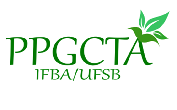Banca de QUALIFICAÇÃO: VALERIA DE CARVALHO MOREIRA
Uma banca de QUALIFICAÇÃO de MESTRADO foi cadastrada pelo programa.STUDENT : VALERIA DE CARVALHO MOREIRA
DATE: 23/08/2023
TIME: 14:00
LOCAL: https://conferenciaweb.rnp.br/sala/joao-batista-lopes-da-silva
TITLE:
Use of geographic information systems (GIS) as a management tool for environmental health surveillance in the city of Porto Seguro/BA.
KEY WORDS:
soil pollutants; information systems; environmental health surveillance; georeferencing; environmental technologies.
PAGES: 60
BIG AREA: Outra
AREA: Ciências Ambientais
SUMMARY:
In order to comply with Ordinance No. 2607/GM of December 10, 2004, the Environmental Health Surveillance Information System on Soil Contamination (SISSOLO) was implemented. SISSOLO aims to identify and prioritize areas with populations exposed to soil with suspected contamination. The objective of this work was to present the potential of the SISSOLO system, building a map of occurrences of soil contamination, revealing the vulnerability and the most affected regions in the municipality of Porto Seguro, making it possible to prioritize and execute actions of comprehensive health care for populations possibly exposed to chemical contaminants. To demonstrate the applicability of the system, the following variables were selected: year, health region, number of registered areas, classification of registered areas regarding the source of contamination, estimated population exposed or potentially exposed to contamination and registered follow-up plan. After selecting the variables, quantitative analyzes of the data were carried out in the period between 2007 and 2022. The files received analytical treatment using the QGIS software in version 3.28 and the Coordinate Reference System (SRC) with the EPSG code 31984, corresponding to the Geographical Coordinates system in Datum SIRGAS 2000 / UTM zone 24S. At the end, a map was built with the accumulation of occurrences of the historical series of events. The spatial distribution of registered cases points to a greater number of potentially exposed areas concentrated in the central region of Porto Seguro, however, there are records in Arraial D'Ajuda, Trancoso and Caraíva. It can be seen that, due to the spatial distribution, 90% of the districts of Porto Seguro have a register of potentially contaminated areas and that, the year 2022 was the year with the highest activity of the system that had been inoperative until then. The population exposed in the registered areas represents a total of 25,650 people exposed to contaminated and/or potentially contaminated areas within the time frame. In 2007 and 2008, exposure to solid waste from different sources linked to improper waste disposal was observed. Problems with human exposure to chemical contaminants found in contaminated areas can contribute to changing the epidemiological picture of the disease in populations. The process of contamination of the territory, as well as its demographic, social, economic and health aspects, in addition to the toxicological profile of environmental contaminants, are important aspects related to human exposure to contaminants. In this way, geoprocessing becomes a technological tool of paramount importance when it comes to health systems management that aims to streamline the process of reading location data of points with potential or confirmed contamination, giving more agility to the process. triggering of intersectoral actions and based on the reality in which it is found. The limitation of the work is the fact that SISSOLO is not a public domain system, which makes access to data difficult, given that, if it is necessary to send reports by the instance that manages the system, this will be exclusively by the Municipal and State Secretariats of health.
COMMITTEE MEMBERS:
Presidente - 1932539 - JOAO BATISTA LOPES DA SILVA
Interno - 1189312 - VANNER BOERE SOUZA
Externa ao Programa - 1357205 - ANA PAULA PESSOA DE OLIVEIRA - UFSBExterno à Instituição - MARCELO LATUF



